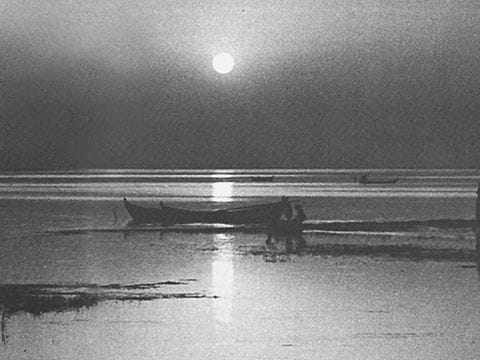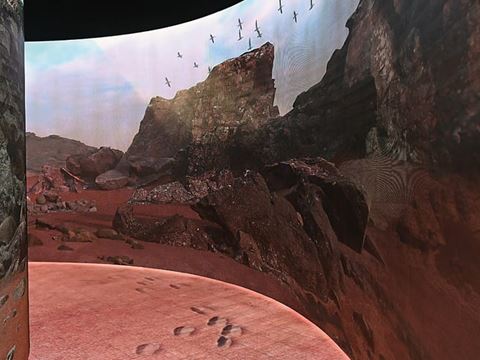
FirstLook: Qubbat al-Sakhra, ca. early 20th century
Photo restorer and artist Kelvin Brown stitched together scans from stereoscopic negatives bringing renewed clarity to the Qubbat al-Sakhra (Dome of the Rock).
Considered one of the greatest achievements of early Islamic architects, craftsmen and artists, the magnificent interior of the Qubbat al-Sakhra (Dome of the Rock) was built between 688 and 691 ce on Jerusalem’s Haram al-Sharif by order of Umayyad Caliph Abd al-Malik. Its intricate patterns reflect Hellenic, Roman, Byzantine and Sassanid influences, together with bands and medallions of Arabic calligraphy.
To create this unique symmetrical image of the hemispheric ceiling dome, photo restorer and artist Kelvin Bown painstakingly stitched together nine digital scans made from stereoscopic negatives originally taken between 1898 and 1920 by photographers commissioned by the American Colony of Jerusalem.
Produced as a limited edition print, this is one of many historical images of the Middle East that Bown has restored using modern techniques. The results bring renewed clarity, depth, detail and presence to early photographs, illuminating aspects of past ways of life that express the beauty, harmony, diversity and sustainability of the region.
See more of Bown's work at www.reawakeningthepast.com.
To create this unique symmetrical image of the hemispheric ceiling dome, photo restorer and artist Kelvin Bown painstakingly stitched together nine digital scans made from stereoscopic negatives originally taken between 1898 and 1920 by photographers commissioned by the American Colony of Jerusalem.
Produced as a limited edition print, this is one of many historical images of the Middle East that Bown has restored using modern techniques. The results bring renewed clarity, depth, detail and presence to early photographs, illuminating aspects of past ways of life that express the beauty, harmony, diversity and sustainability of the region.
See more of Bown's work at www.reawakeningthepast.com.
You may also be interested in...

Discovering Life and Architecture in Iraqi Marshes
History
Arts
Amidst "the stillness of a world that never knew an engine... he found at last a life he longed to know and share.
Ithra Explores Hijrah in Islam and Prophet Muhammad
History
Arts
Avoiding main roads due to threats to his life, in 622 CE the Prophet Muhammad and his followers escaped north from Makkah to Madinah by riding through the rugged western Arabian Peninsula along path whose precise contours have been traced only recently. Known as the Hijrah, or migration, their eight-day journey became the beginning of the Islamic calendar, and this spring, the exhibition "Hijrah: In the Footsteps of the Prophet," at Ithra in Dhahran, Saudi Arabia, explored the journey itself and its memories-as-story to expand understandings of what the Hijrah has meant both for Muslims and the rest of a the world. "This is a story that addresses universal human themes," says co-curator Idries Trevathan.
Orion Through a 3D-Printed Telescope
Arts
With his homemade telescope, Astrophotographer Zubuyer Kaolin brings the Orion Nebula close to home.